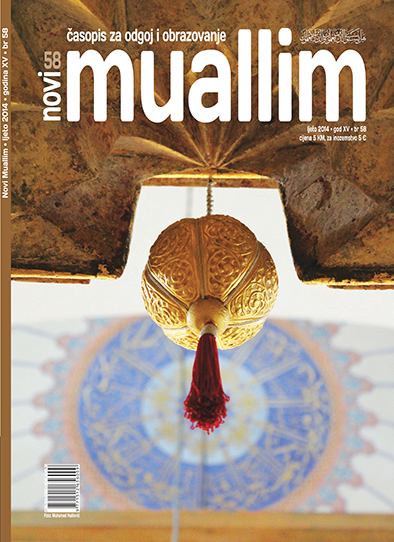HOW TO INCITE CREATIVITY IN BOTH A STUDENT AND A TEACHER
DOI:
https://doi.org/10.26340/muallim.v15i58.238Keywords:
teacher, creativity, education, schoolAbstract
UDK 37.036
The school has now for centuries in the development of human society presented a place wherein the young generations are educated in a systematic, organised and standardised manner. The process of education is determined by a number of relevant factors as: the method (of learning and teaching), means and forms. It is generally known that the school systems (from primary to university education) are even today in a great extent based upon more than three centuries old concepts established by J. A. Komensky (about the organisation of the teaching class) and Herbart (about formal degrees of learning). In order to have successful process of teaching, besides having a good choice of a form of teaching, permanent creativity in formulating teaching class is required as well as remaining within a given framework of class – subject system. Creativity in organising the educational process is essential if we desire to incite creativity in its recipient (student). Encouraging creativity of students is a basic theme of this article, hence we shell here bring up definitions of some concepts and discuss variety of perceptions of the concept of creativity in teaching class and in learning. In this context we will present the opinions of a number of contemporary authors in fields of pedagogy, didactics and development psychology concerning both traditional and contemporary teaching. Considering the fact that inciting and forming students creativity mainly depends upon teacher, in this article we bring some outlines of profiles and characteristics of a creative teacher, as well as the ways to affirm students’ creativity in its best.
Downloads
Published
How to Cite
Issue
Section
License
Naknada:
a. Časopis ne naplaćuje naknadu za obradu članaka (APC) i naknadu za podnošenje članaka.
Autori koji objavljuju u ovom časopisu pristaju na sljedeće uvijete:
- Autori zadržavaju autorska prava i pružaju časopisu pravo prvog objavljivanja, pri čemu će rad jednu godinu po objavljivanju biti podložan licenci Creative Commons imenovanje koja omogućuje drugima da dijele rad uz uvijet navođenja autorstva i izvornog objavljivanja u ovom časopisu.
- Autori mogu izraditi zasebne, ugovorne aranžmane za ne-ekskluzivnu distribuciju rada objavljenog u časopisu (npr. postavljanje u institucionalni repozitorij ili objavljivanje u knjizi), uz navođenje da je rad izvorno objavljen u ovom časopisu.


